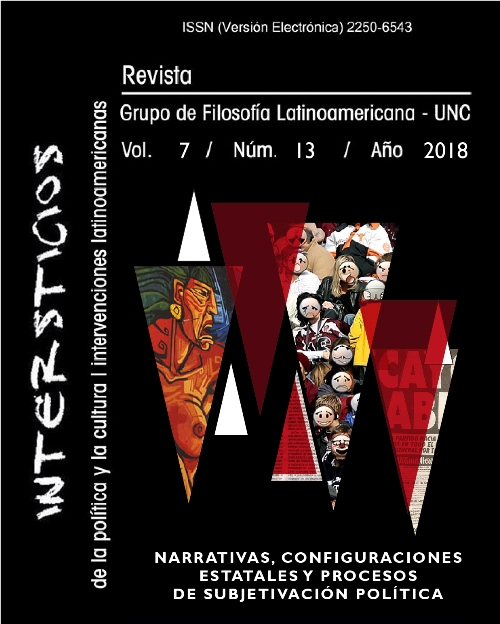Against biopolitical domination: the common world as a threshold
Keywords:
biopolitics, neoliberalism, threshold, world in commonAbstract
The current neoliberal hegemonic configuration has as one of its features the biopolitical exercise in different dimensions and degrees. Such exercise of control has been constituted as a transideological mantle, i.e. where the distinction between political positions such as the left and the right remain little differentiated as regards the biopolitical exercise. It is in the rootedness in social life of its foundations to understand, produce and qualify existence where lies the effectiveness of the biopolitical domain and to a large extent what complicates the actions to face it. Moreover, when this biopolitical domain appears as a kind face of instrumental reason: the experts managing life: the domain of professionals, experts in particular, begins to invade every corner of human experience, making possible the atomization of the existence. We must question, in this sense, the role played by those who have been placed - particularly by choice - as those who receive, produce, transmit and operate the intervention in life from the dominant knowledge, that is from our position of cognitariat; but also, from the condition of entrepreneurial business logic that the same invades the intellectual positions that activist/military. From this reading, this article proposes reflecting on the world in common as an alternative to the biopolitical domain, assuming that the commitment to the common world means identifying the thresholds where the encounter with others takes place. Life and the world in common as a bet and not as a destination is a posture from corporality, or rather, from the intercorporality, of mutual affectations – and combat – body-to-body.Downloads
Downloads
Published
Issue
Section
License
Authors who have publications with this journal agree to the following terms:
a. Authors will retain their copyright and grant the journal the right of first publication of their work, which will simultaneously be subject to the Creative Commons Attribution License that allows third parties to share the work as long as its author and first publication in this journal are indicated.
b. Authors may adopt other non-exclusive license agreements for distribution of the published version of the work (e.g., deposit it in an institutional telematic archive or publish it in a monographic volume) as long as the initial publication in this journal is indicated.
c. Authors are allowed and encouraged to disseminate their work through the Internet (e.g., in institutional telematic archives or on their web page) after the publication process, which may produce interesting exchanges and increase citations of the published work (see The effect of open access).


